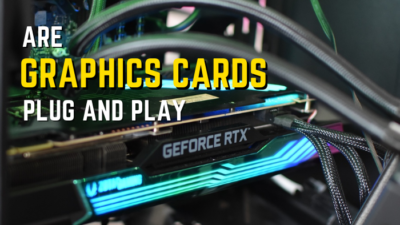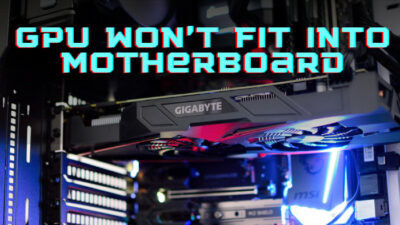In the past, you were happy that a game was running on your PC. You didn’t focus on the FPS counter or gaming details.
But in modern days, gamers want a realistic gaming experience with smooth performance. Various technologies like V-sync, FreeSync, and G-Sync assist in achieving a tearing-free gaming experience.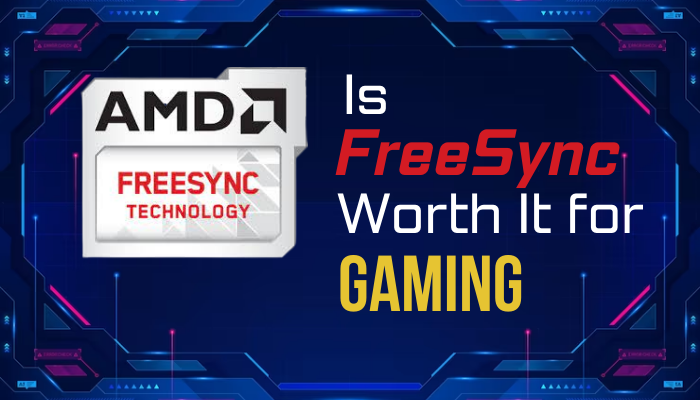
But are those techs really worthy? Let’s dive into this article, where I will mention the valuation of FreeSync specifically.
What is FreeSync? How Does it Work?
When the monitor’s image doesn’t match the graphics card’s frames, the images will look like they got split part by part. This is the screen tearing where the FPS doesn’t sync with the monitor’s frequency. This results in a bad gaming screen visualization. 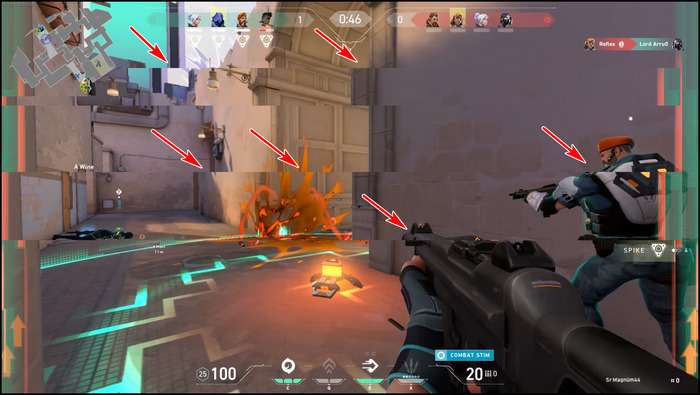
To mitigate this visual distortion, in 2013, Nvidia introduced G-Sync monitors, which eliminate the twisting images. The G-Sync feature makes the gameplay smoother. Later in 2014, AMD developed FreeSync technology based on VESA’s adaptive sync at a much lower cost than G-Sync.
So, FreeSync is a technology that synchronizes the monitor & GPU’s refresh rate dynamically. Thus, remove stuttering & tearing. With VRR (Variable Refresh Rate), FreeSync provides us with a smoother gaming session.
But what are the requirements for using FreeSync?
You will require a monitor & graphics card that both support the FreeSync feature. In addition, a compatible GFX driver & connector cable is also needed to work the feature properly.
You may wonder, is there really a benefit to getting a FreeSync monitor or enabling the feature on your existing card for your game?
To eliminate the confusion, I added a table of differences between FreeSync and G-Sync below.
| Factors | AMD FreeSync | NVIDIA G-Sync |
|---|---|---|
| Implementation | Differs | Uniform |
| Connectivity Ports | Several input slots | Limited to 1 or 2 |
| GPU Compatibility | AMD cards, APUs, and specific NVIDIA graphics cards | Only NVIDIA GPUs |
| Input Lag | Usually higher than G-Sync | Very low |
| Availability | Great | Decent |
| Price | Affordable like standard monitors | Costly |
| Versions | FreeSync, FreeSync Premium, and FreeSync Premium Pro | G-Sync Ultimate |
Is Using AMD FreeSync Worth It?
NVIDIA and AMD both offer us their sync tech to achieve a tearless gaming session & both are similar in function. But there are some differences between G-Sync and FreeSync.
While G-Sync is hardware implemented, native G-Sync monitors cost more than the royalty-free FreeSync ones. Though G-Sync monitors have very low input lag & supported by only NVIDIA graphics cards, their availability is decent than its competitor.
So the widely available, affordable, compatible with AMD, some NVIDIA, and even Intel cards, is FreeSync the better choice over the G-Sync?
Well, AMD FreeSync tech is definitely worth it if you want a tearing & stutter-free gaming session with compatible hardware. This brings fluidity to the games. But before saying it boasts, let’s take a moment to know about the advantages & disadvantages of the feature.
FreeSync Pros & Cons
As G-Sync is a hardware-based & more costly solution to remove tearing, its rival FreeSync is hardware/software based that is more cost-effective with a wide range of monitor selections.
Additionally, the FreeSync monitor can be used broadly, like with PC, Xbox, PlayStation, etc., compared to G-Sync. Furthermore, it helps to remove ghosting & motion blur too.
The G-Sync feature is only used by Nvidia cards. This raises the question, does FreeSync work with Nvidia? Well, FreeSync tech can be used by both AMD & Nvidia GPUs. But where most of the AMD cards natively support the FreeSync feature, there are some boundaries for the Nvidia cards.
AMD FreeSync has a limitation for the VRR where its avg. value is 40Hz to 144Hz. G-Sync can go as low as 1Hz & doesn’t use VESA’s open-source tech like the FreeSync. But for the sync tech, encountering a slight input delay is a common issue for both techs.
In addition, the sync tech needs the FPS to stay below the monitor’s max refresh rate, the GPU usage gets lower. This helps to reduce the graphics card’s hotspot temp.
So, with all these mixed tastes, who should use FreeSync & who should avoid this? Read along to know the answer.
For Whom FreeSync is Worthy
FreeSync is useful when you have an AMD card & monitor that also supports FreeSync.
I have an Aorus RX 580 with an LG 24GL600F monitor. Both hardware supports the FreeSync feature over HDMI & DP cables.
Why mention FreeSync work with HDMI or DisplayPort?
Because Nvidia 10-series & above cards require DisplayPort cables to work with FreeSync monitors.
When I play games like GTA V, DOTA 2, LOL, or some single-player games where a high frame rate is not mandatory, I use FreeSync for smoother tearless gameplay.
For the sync technology, the FPS needs to cap below the monitor’s max frequency. For these capped frame rates, the frame times stay constant, which helps to reduce motion blur & the aim gets more accurate.
So if you want a stutter, lag & tearless game, it is definitely worth getting a FreeSync monitor & enabling the feature.
Additionally, if it supports FreeSync Premium, you will have Low Framerate Compensation that ensures stability in 120Hz at 1080p resolution, whereas FreeSync Premium Pro offers HDR.
To Whom FreeSync is Not Good
FreeSync feature works when the frame rates stay within the monitor’s max refresh rates. So to make the feature work, it is recommended to cap the FPS below the monitor’s frequency.
But this costs with input delay. Fast reaction time is crucial in competitive gaming like Valorant, Rainbow Six Siege, Fortnite, Call of Duty Multiplayer, etc.
These First Person Shooting games require low input lag. High refresh rates provide low latency, which helps to see the enemy faster & react to them quickly. If you cap the FPS, it will add a 1ms to 2ms input delay, which can lower your K/D ratio for a slow reaction.
So, if you are a hardcore competitive multiplayer gamer, then it is not wise to play with FreeSync enabled.
How to Enable FreeSync With AMD GPU?
So, if you belong to those gamers who enjoy single-player games where high frame rates don’t matter to fight against the enemy in real-time, then you should enable the FreeSync feature. But if you don’t have experience with how to enable the feature, don’t worry.
Follow the procedures below to learn how to use FreeSync with your AMD graphics card.
Firstly, ensure your monitor’s FreeSync feature is turned on. I have an LG 24GL600F monitor. I’m showing you how to enable the feature with this monitor. If you don’t find the FreeSync option on OSD for other monitor models, follow the manual book then.
- Open the monitor’s OSD by pressing the joystick button.
- Select Settings with the joystick control.
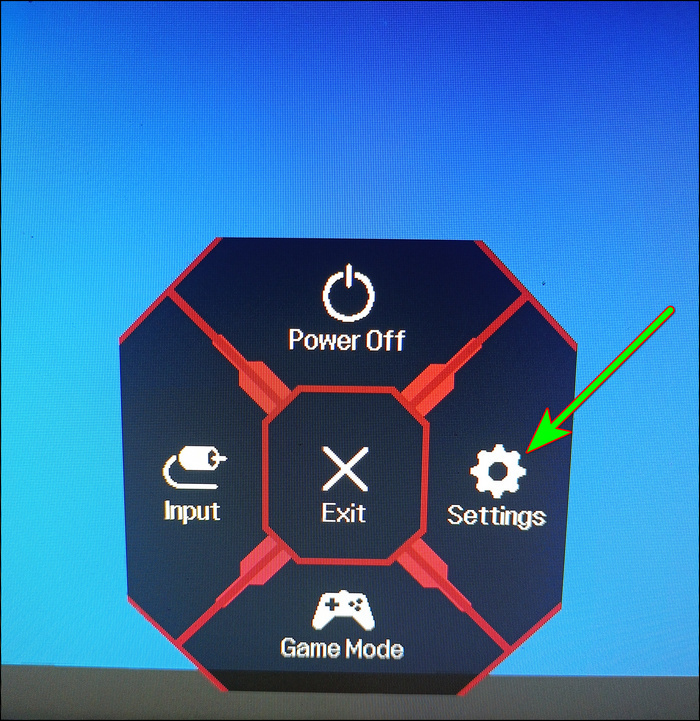
- Go to Game Adjust, then FreeSync & finally choose Extended.
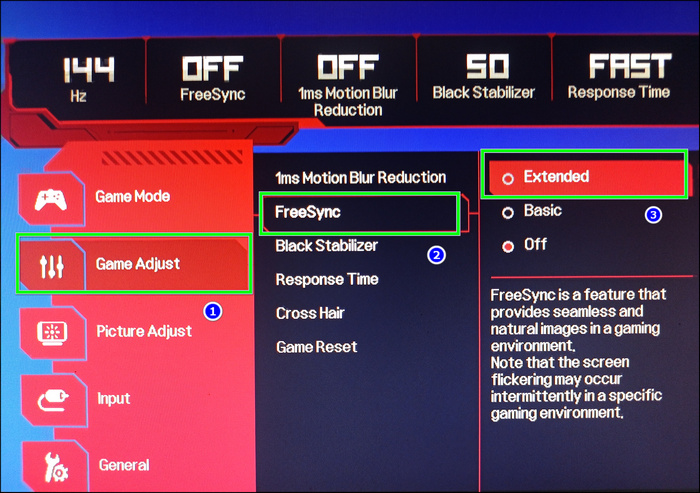
After that, you have to enable FreeSync from the AMD Adrenalin Software.
Here are the steps to turn on FreeSync in the AMD graphics driver:
- Right-click on the desktop & select AMD Software: Adrenalin Edition.
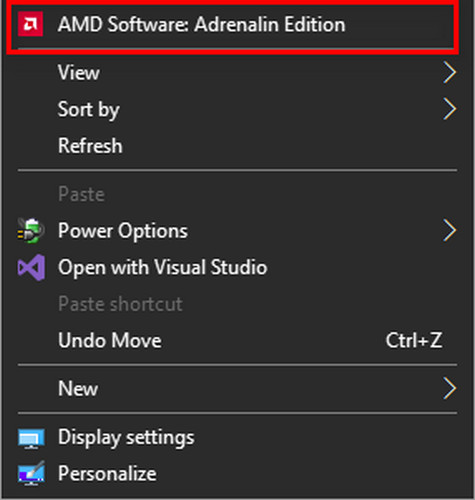
- Select Settings (the gear icon) from the top right side.
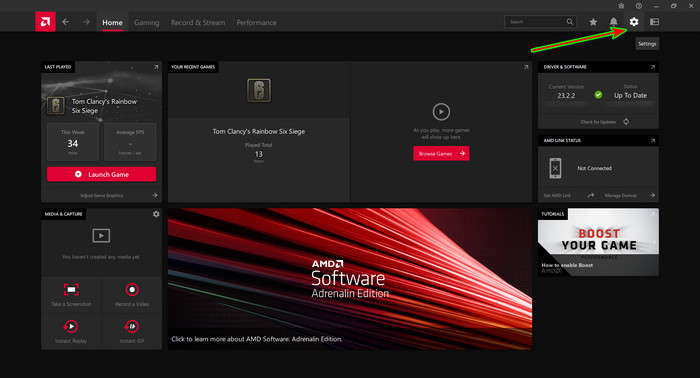
- Go to the Display tab.
- Switch to enable the AMD FreeSync Premium.
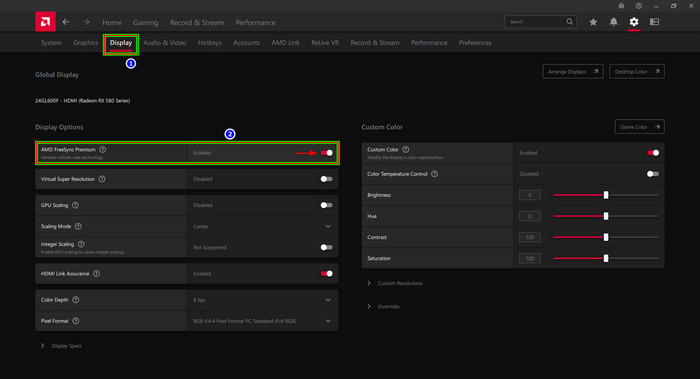
If you want to do this for a specific game, then follow as below,
- Go to the Gaming tab.

- Select the game you want to enable FreeSync.
- Click On from the AMD FreeSync located on the right side.
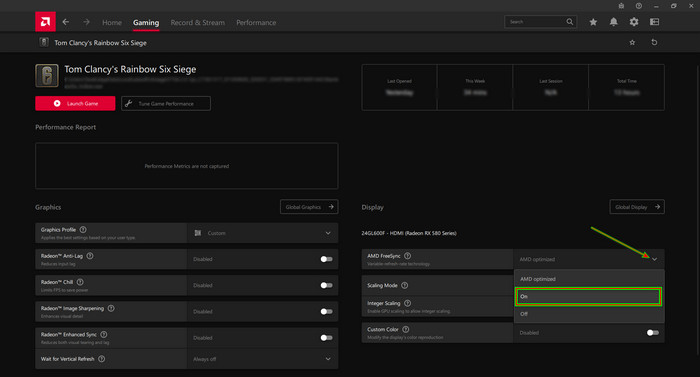
And you are done. Enjoy your gaming without lag, stutter & tear.
FAQs
What is the Main Difference Between FreeSync vs G-Sync?
G-Sync is hardware-based & provides better quality than FreeSync. FreeSync works within 40-144Hz, whereas G-Sync can go as low as 1Hz. Furthermore, G-Sync monitors are pricey & the feature is only available for Nvidia GPU. But FreeSync can be used with both AMD & Nvidia GPU with some conditions.
Do gamers use FreeSync?
FreeSync monitors can be used by PC, Xbox, and PlayStation. So the feature is widely used by gamers all around the world.
Does FreeSync lag?
While FreeSync removes tearing by syncing frame rates with the monitor’s refresh rate, it adds a small amount of input lag. This is why it is better to use when playing non-competitive games because these games don’t involve faster reaction time on AI enemies.
Does FreeSync work above 144fps?
As FreeSync synchronizes the game’s frames with the monitor’s frequency, it will not be able to work when the frames cross over the monitor’s Hz.
Final Thought
In conclusion, we can say FreeSync is a game changer that mitigates the problems of tearing.
For those who don’t play competitive multiplayer, FreeSync is really worth it for them to enjoy stutter-free games.
In this article, I explained the importance of FreeSync & whether it is worth it for you. If you have any further queries, please leave a comment.

